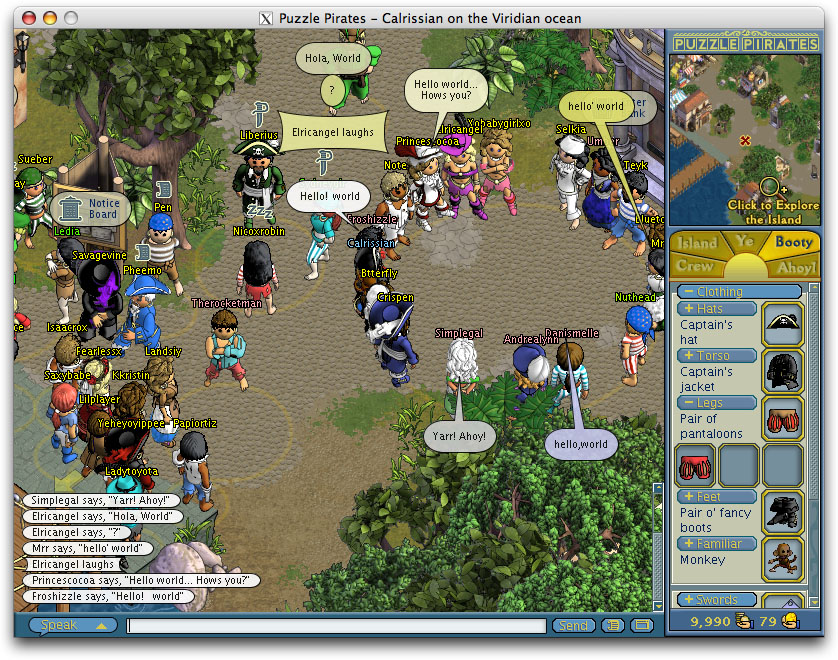LEGS Mac OS
As early as Mac OS X v10.5 build 9A466 the community has maintained a version of Leopard that can run on non-Apple hardware. A hacker by the handle of BrazilMac created one of the earliest patching processes that made it convenient for users to install Mac OS X onto 3rd party hardware by using a legally obtained, retail version of Apple Mac OS X. Mac OS X & macOS names. As you can see from the list above, with the exception of the first OS X beta, all versions of the Mac operating system from 2001 to 2012 were all named after big cats.
Transform Warp
Updated in Photoshop 21.0 (November 2019 release)
The Warp command lets you drag control points to manipulate the shape of images, shapes, or paths, and so on. You can also warp using a shape in the Warp pop‑up menu in the options bar. Shapes in the Warp pop‑up menu are also malleable; you can drag their control points.
Legs Mac Os Catalina
Check out this video tutorial by Julieanne Kost: New Transform Capabilities in Photoshop’s Warp Tool
When using the control points to distort an item, choosing View > Extras shows or hides the warp mesh and control points.
Select a layer or an area in the image you want to warp.
After making a selection, do one of the following:
Choose Edit > Transform > Warp or
Press Control + T (Win) / Command + T (Mac), then click the Switch Between Free Transform And Warp Modes button in the options bar.
To warp your selection using a warp preset, choose a warp style from the Warp pop‑up menu in the options bar.
To create a custom warp mesh, choose a grid size from the Grid pop-up menu in the options bar.
- Select a default grid size - 3 x 3, 4 x 4, or 5 x 5.
- Or, select Custom and then specify the numbers of Columns and Rows in the Custom Grid Size dialog.
To add more control grid lines to the warp mesh, choose an option to split the warp.
- Do any of the following:
- In the options bar, click any of the Split buttons.
- Choose Edit > Transform > Split Warp Horizontally, Split Warp Vertically, or Split Warp Crosswire.
- Move the pointer within mesh area and click where you place additional control grid lines.
As you move the pointer, over the warp mesh, you’ll see the split lines track the pointer. When you click, additional control points are added to the warp mesh.
Note:
You can also use the Alt (Win) / Option (Mac) modifier key to quickly toggle through the split warp options without returning to the menu bar.
- Hold down the Alt (Win) / Option (Mac) key and click anywhere the warp mesh to split the warp crosswire at that location.
- Hold down the Alt (Win) / Option (Mac) key and move the pointer near the edge of an existing horizontal grid line. Click to split the warp vertically at that location.
- Similarly, hold down the Alt (Win) / Option (Mac) key and move the pointer near the edge of an existing vertical grid line. Click to split the warp horizontally at that location.
- Do any of the following:
- To manipulate the shape, drag the control points, a segment of the bounding box or mesh, or an area within the mesh. When adjusting a curve, use the control point handles. This is similar to adjusting the handles in the curved segment of a vector graphic.
- Click on a grid line to activate control points for editing the warp. Click on an anchor point (at the intersection of the grid lines) lets you edit the control points surrounding that anchor. Drag the control points to warp the image.
- To select multiple points, Shift+click on the anchor points or click-and-drag the pointer over the points while holding down the Shift key. A rectangle appears around the selected points if two or more points are selected.
- To deselect multiple points, Shift+click on the active anchor points or click-and-drag the pointer over the active points while holding down the Shift key. The rectangle surrounding the selected points automatically resizes as points are selected or deselected.
- To delete a selected grid line (control points along the line are visible), press Delete or choose Edit > Transform > Remove Warp Split.
- To delete both the horizontal and vertical grid lines passing through an anchor point, click the anchor point, then press Delete or choose Edit > Transform > Remove Warp Split.
- To change the orientation of a warp style that you chose from the Warp menu, click the Change The Warp Orientation button in the options bar.
- To change the reference point, click a square on the Reference point locator in the options bar.
- To specify the amount of warp using numeric values, enter the values in the Bend (set bend), X (set horizontal distortion), and Y (set vertical distortion) text boxes in the options bar. You can’t enter numeric values if you have chosen None or Custom from the Warp Style pop‑up menu.
- To manipulate the shape, drag the control points, a segment of the bounding box or mesh, or an area within the mesh. When adjusting a curve, use the control point handles. This is similar to adjusting the handles in the curved segment of a vector graphic.
Press Enter (Windows) or Return(Mac OS), or click the Commit button in theoptions bar.
To cancel the transformation, press Esc or clickthe Cancel button inthe options bar.
When you warp a bitmap image (versus a shape or path), the image becomes slightly less sharp each time you commit a transformation; therefore, performing multiple commands before applying the cumulative transformation is preferable to applying each transformation separately.
Puppet Warp provides a visual mesh that lets you drastically distort specific image areas, while leaving other areas intact. Applications range from subtle image retouching (such as shaping hair) to total transformations (such as repositioning arms or legs).
In addition to image layers, you can apply Puppet Warp to layer and vector masks. To nondestructively distort images, use Smart Objects. (See Create Smart Objects.)
In the Layers panel, select the layer or mask you wantto transform.
In the options bar, adjust the following mesh settings:
Determines the overall elasticity of the mesh.
Note:
Choose Distort for a highly elastic mesh good for warping wide-angle images or texture maps.
Determines the spacing of mesh points. More Points increases precisionbut requires more processing time; Fewer Points does the opposite.
Expands or contracts the outer edge of the mesh.
Deselect to show only adjustment pins, providing a clearer preview of your transformations.
Note:
To temporarily hide adjustment pins, press the H key.
In the image window, click to add pins to areas you wantto transform and areas you want to anchor in place.
Moving a pin on the puppet mesh. Adjoining pins keep nearby areas intact.To reposition or remove pins, do any of the following:
Drag pins to warp the mesh.
To reveal a mesh area you’ve overlapped with another, clickthe Pin Depth buttons inthe options bar.
To remove selected pins, press Delete. To remove other individualpins, place the cursor directly over them, and press Alt (Windows)or Option (Mac OS); when the scissors icon appears,click.
Click the Remove All Pins button inthe options bar.
Note:
To select multiplepins, Shift-click them or choose Select All fromthe context menu.
To rotate the mesh around a pin, select it, and then do eitherof the following:
To rotate the mesh a fixed number of degrees, press Alt (Windows) or Option (Mac OS), and position the cursor near to, but not over the pins. When a circle appears, drag to visually rotate the mesh.
Note:
The degree of rotation appears in the options bar.
- To rotate the mesh automatically based on the selected Mode option, choose Auto from the Rotate menu in the options bar.
When your transformation is complete, press Enter or Return.

More like this
How to start up in macOS from Windows
Legs Mass Workout
- From the notification area on the right side of the Windows taskbar, click to show hidden icons.
- Click the Boot Camp icon .
- From the menu shown, choose Restart in macOS.
If you haven't installed the latest Boot Camp updates, you might get the message ”Could not locate the OS X boot volume.'
Or use Startup Manager as your Mac starts up:
- Restart your Mac from the Start menu in Windows.
- Press and hold the Option (or Alt) ⌥ key as your Mac begins to restart.
- Select your Mac startup volume (Macintosh HD) in the Startup Manager window, then press Return or click the up arrow:

How to start up in Windows from macOS
Les Macons Du Coeur
- Use Startup Manager to choose your Windows (Boot Camp) volume during startup.
- Or select your Boot Camp volume in Startup Disk preferences, then restart.
Learn more
Legs Mac Os 11
- If you're having difficulty using VoiceOver or another screen reader to complete these steps, please contact Apple Support.
- Learn how to install Windows 10 on your Mac.